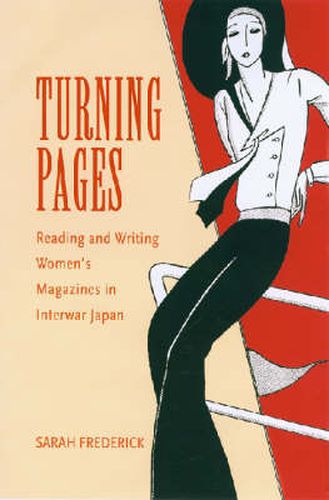Readings Newsletter
Become a Readings Member to make your shopping experience even easier.
Sign in or sign up for free!
You’re not far away from qualifying for FREE standard shipping within Australia
You’ve qualified for FREE standard shipping within Australia
The cart is loading…






By the early 1920s,
ladies magazines
(fujin zasshi) had become a distinct category in Japanese publishing. Women’s periodicals increasingly influenced intellectual discourse, the literary establishment, and daily life.
Turning Pages
makes sense of this phenomenon through a detailed analysis of major interwar women’s magazines, especially the literary journal
Ladies’ Review , the popular domestic periodical
Housewife’s Friend , and the politically radical magazine
Women’s Arts . Through a close examination of their literature, articles, advertising, and art, the book explores the magazines as both windows onto and actors in this vibrant period of Japanese history.
Turning Pages
considers the central place of representations of women for women in the culture of interwar-era Japan and our understanding of Japanese modernity. Taking a holistic approach to the texts and using tools of historical, literary, and cultural analysis, the author examines the triangular relationship among the consumers, the producers, and the texts themselves.
$9.00 standard shipping within Australia
FREE standard shipping within Australia for orders over $100.00
Express & International shipping calculated at checkout
By the early 1920s,
ladies magazines
(fujin zasshi) had become a distinct category in Japanese publishing. Women’s periodicals increasingly influenced intellectual discourse, the literary establishment, and daily life.
Turning Pages
makes sense of this phenomenon through a detailed analysis of major interwar women’s magazines, especially the literary journal
Ladies’ Review , the popular domestic periodical
Housewife’s Friend , and the politically radical magazine
Women’s Arts . Through a close examination of their literature, articles, advertising, and art, the book explores the magazines as both windows onto and actors in this vibrant period of Japanese history.
Turning Pages
considers the central place of representations of women for women in the culture of interwar-era Japan and our understanding of Japanese modernity. Taking a holistic approach to the texts and using tools of historical, literary, and cultural analysis, the author examines the triangular relationship among the consumers, the producers, and the texts themselves.